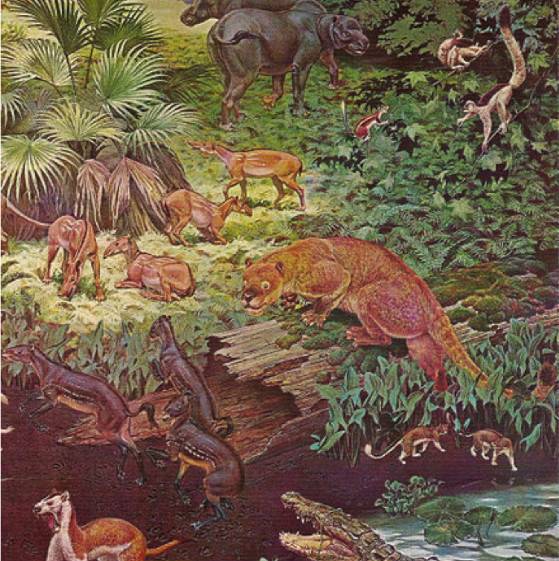
Fossils are amazing tools for understanding the past and how ecosystems have changed. You may have heard of the Danville Mine nearby. Hundreds of feet underground in the dimly-lit mine there is a forest. As you make your way through the tunneled-out mine you can look to the ceiling to see an ecosystem frozen in time. Entire fossil trees, ferns, and shrubs have all been preserved for the last three hundred million years. By studying these fossils, scientists from the Illinois State Geological Survey and the Smithsonian gain a better understanding of what the area may have been like back then and how it is different from a rainforest seen today. Scientists can compare rainforests through time and learn how the organisms in the forest have changed, as well as how the relationships between the organisms and their relationship to the environment have changed. Understanding change through time is valuable because it can be used as a predictor for the future, but it is not enough. There must also be an understanding of the driving forces behind the change.
One force behind evolutionary change is a change in climates. As humans dramatically alter the global climate, it becomes increasingly important to understand how increases in temperature affect organisms and the ecosystems in which they live. Changing climates is not a new phenomenon, so looking at the effect it has had on past ecosystems can serve as a model for current and future ecosystems.
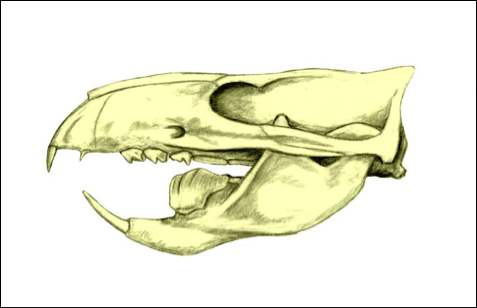
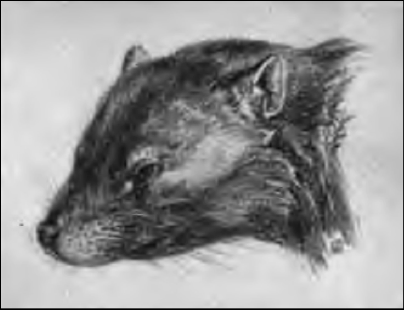
Fossil mammals are particularly interesting. After all, we are mammals; we eat mammals; and for those of us with house pets, we love mammals. As a paleontologist, I am very interested in mammalian change through time. Mammals underwent a major change around the same time the global climate was changing, approximately 55 million years ago. I study how mammals evolved from the small, rodent-like ones that lived over 65 million years ago during the time of the dinosaurs to the variety of mammals we see today. Since this is a large amount of time to cover, I focus on the turnover, or the replacement, of those small mammals that look like rodents, called archaic mammals (e.g. multituberculates), with the ancestors to today’s mammals, or modern mammals (such as the ancestors of horses, primates, giraffes, lions, etc.). This replacement took place over about 25 million years. And it happened 65 million to 40 million years ago.
Around 55 million years ago, the world experienced a tremendous increase in temperature over a relatively short amount of time (approximately 20,000 years), called the Paleocene/Eocene Thermal Maximum, named for the two epochs of time that border the event. The temperature before the Paleocene/Eocene Thermal Maximum was generally warmer, and after, it tended to be cooler. Archaic mammals that lived in the warmer climates of the Paleocene became extinct and modern mammals took over the cooling earth of the Eocene. How did the relationships between organisms change during this time? Did this turnover between archaic and modern mammals affect the composition or complexity of their ecosystems? Specifically, was there a change in the diets or abundance of certain diets (carnivore, herbivore, or omnivore)? In order to see if there was a change and how this change might have altered the organism’s ecosystems I need to look at the fossil record.
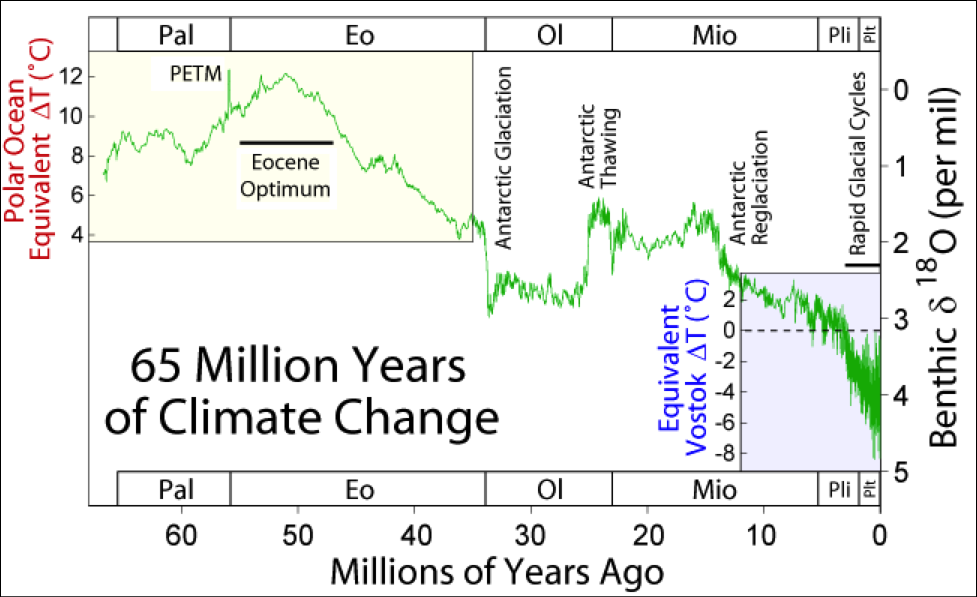
A great place to study the fossil record for mammals is our own backyard, the North American Midwest. This region is home to the fossil freeway, a stretch of road that crosses from South Dakota to Nebraska, and features numerous fossil sites. Since the region has not undergone many changes in the past sixty million years and is relatively open and exposed, it is a great area to find fossils. Some farmers are even able to find fossils out in their fields. The Midwest also has several museums with large collections of fossils, such as the Field Museum in Chicago and the University of Nebraska State Museum in Lincoln. My research will mostly use fossils from museum collections.
Because I am looking for a change in ecosystems across the Paleocene/Eocene Thermal Maximum, I will need to look at fossils before, during, and after the event. The fossils from before the event, the archaic mammals, have been previously thought to have limited diets, believed to be restricted or “held down” by the dinosaurs. However, new research from the University of Washington suggests mammals had a wide variety of diets even before the extinction of the dinosaurs. Comparing the variety of diets as they cross the Paleocene/Eocene boundary provides insight into what happens to an ecosystem during a major climactic shift.
Additionally, I am trying to understand changes in diets, so I will also focus on fossil teeth. Fossilized mammalian teeth are a great indicator of an animal’s diet because they reflect what the animal was eating. There are several different ways to study the teeth. One way is to look at the dental microwear — the pits and scratches on the fossil teeth that are caused by the food animals eat. Pits are characteristic of hard material and long scratches on the teeth are more characteristic of soft material. This method is slightly biased towards what the animal was eating upon (or near) its death since new pits and scratches will cover up older ones. Therefore, it may not reflect the diet an animal had during the entirety of its life.
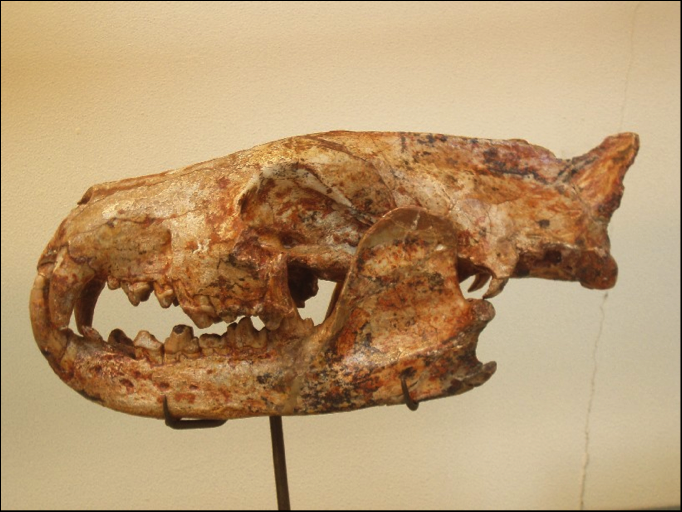 Scientists also look at how many different times the surface of a tooth changes. Is the tooth surface flat or is it a very disturbed surface (similar to a stormy ocean)? The more disturbed a tooth is, the more patches of orientation we say it has. A tooth with lots of patches of orientation is more likely to have been an herbivore, and the fewer it has, the more likely it was a carnivore, with the omnivore diet in the middle. This is a new method being developed by researchers at the University of Washington. These patches of orientation are so small that we need a computer to map them. Since it is relatively new research and requires teeth to be digitally studied, it can be costly.
Scientists also look at how many different times the surface of a tooth changes. Is the tooth surface flat or is it a very disturbed surface (similar to a stormy ocean)? The more disturbed a tooth is, the more patches of orientation we say it has. A tooth with lots of patches of orientation is more likely to have been an herbivore, and the fewer it has, the more likely it was a carnivore, with the omnivore diet in the middle. This is a new method being developed by researchers at the University of Washington. These patches of orientation are so small that we need a computer to map them. Since it is relatively new research and requires teeth to be digitally studied, it can be costly.
A third method for looking at fossilized teeth is called Dental Mesowear Analysis. This method requires looking at the cusp of the teeth. A high cusp, or point on a tooth, is indicative of a “chomping” motion characteristic of carnivores. The high cusp results from the teeth bumping together and the cusps interlocking. Imagine an alligator. They do not have flat surfaced teeth that press together. Instead they have sharp teeth that shear their food. On the other hand, a low cusp indicates an herbivorous diet. The cusps are lower since the teeth are used for grinding plant material. Now imagine a cow, whose teeth need to be relatively flat to grind the grass it eats. Cusp height is the result of both the development of the tooth (planned before the animal is born) and the lifetime diet of the animal (grinding makes for flatter teeth; shearing makes for sharper teeth). This is a relatively simple method that provides detailed information on the diets of the mammals from around 55 million years ago.
The turnover between archaic mammals and modern mammals is evidence for how a switch between a warmer climate and a cooler climate drastically impacted the makeup of mammalian ecosystems. Knowing how ecosystems reacted to climate change in the past offers us clues about potential effects of climate change today.
Written by David Birlenbach, Masters candidate, Department of Animal Biology, University of Illinois.
~~*~~
Smile Politely is proud to introduce a new running series we are calling “Science Politely” that will feature the work of graduate students at the University of Illinois throughout November and December. Working in collaboration with the students in a graduate course in Integrative Biology, Science Politely is a collaboration aimed at bridging the gap between town and university, between scientist and citizen, and between research and culture.








